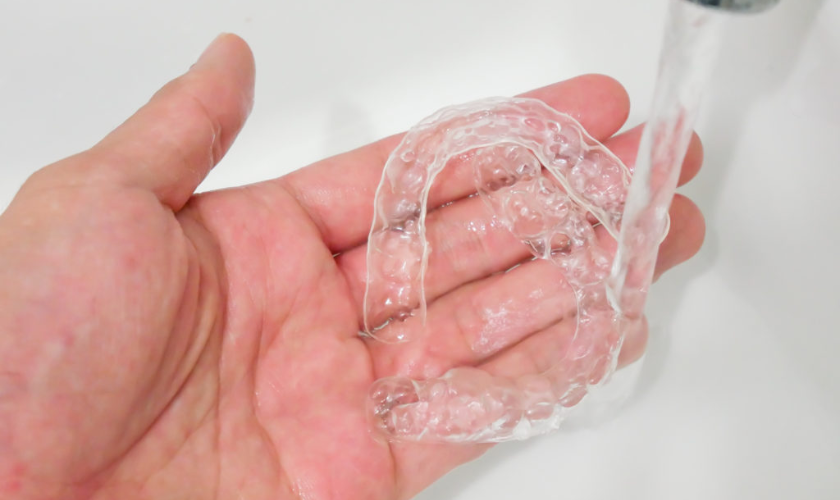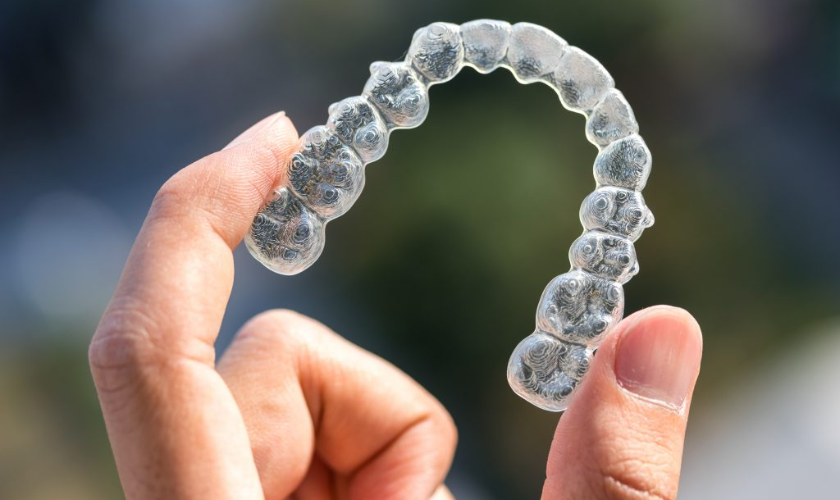Getting Invisalign treatment is an excellent way to achieve a straighter, more confident smile. Traditional metal braces can be a turn-off for many, but Invisalign offers a discreet and comfortable alternative. This comprehensive guide will take you through the entire Invisalign process, from the initial consultation to your final results.
Understanding Invisalign
Invisalign is a clear aligner system that gradually straightens your teeth. Unlike traditional braces, Invisalign uses a series of custom-made clear, removable trays to fit your teeth. These trays gently apply pressure to your teeth, moving them into the desired position over time.
Is Invisalign Right for You?
A variety of orthodontic issues can be resolved with Invisalign, making it a flexible treatment choice. These concerns include:
- Crowding
- Gaps
- Overbites
- Underbites
- Open bites
However, it’s important to consult with a dentist or orthodontist to determine if Invisalign is the right choice for you. During your initial consultation, your dental professional will assess your individual needs and discuss the best course of treatment.
The Invisalign Treatment Process: A Step-by-Step Guide
Getting Invisalign treatment involves several key steps:
1. Initial Consultation
Getting Invisalign treatment provides you with the chance to discuss your smile goals and address any questions you might have. During your consultation, your dentist or orthodontist will conduct a comprehensive examination of your teeth and gums, take X-rays and digital scans of your mouth, and review your dental history. They will also explain the Invisalign treatment process, outline potential risks and benefits, and answer any questions you may have.
2. Creating Your Treatment Plan
Once you’ve decided to move forward with Invisalign, your dentist or orthodontist will use the digital scans and X-rays to create a 3D model of your teeth. This model allows them to visualize your teeth’s movement throughout treatment and develop a customized treatment plan. You’ll be able to see a virtual simulation of your projected outcome, giving you a clear idea of what to expect.
3. Manufacturing Your Aligners
The 3D model is then sent to a dental lab where your custom Invisalign aligners will be manufactured. Each aligner is designed to move your teeth a specific amount, and you’ll receive a series of aligners to wear throughout your treatment. The number of aligners you’ll need will depend on the complexity of your case.
4. Starting Treatment
When your first set of aligners arrives, your dentist or orthodontist will provide you with detailed instructions on how to wear them properly and care for them. Generally, you’ll need to wear your aligners for 20-22 hours a day, only removing them for eating, drinking (other than water), and brushing your teeth.
5. Progress Checks and Adjustments
You’ll typically schedule regular appointments with your dentist or orthodontist throughout your treatment. During these visits, they can check on your progress, make sure the aligners are fitting properly, and make any required corrections.
6. Completing Treatment and Retention
Once you’ve completed your series of aligners and achieved your desired results, you’ll likely need to wear a retainer to maintain your new smile. Retainers are typically worn at night to prevent your teeth from shifting back.
The Benefits of Choosing Invisalign
Comparing Invisalign to traditional braces has several benefits, such as:
Discreetness:
The clear aligners are virtually invisible, making them a more aesthetically pleasing option for many people.
Comfort:
Unlike metal braces that can irritate the mouth, Invisalign aligners are comfortable to wear.
Removable:
You can remove the aligners for eating, drinking, and brushing your teeth, making it easier to maintain good oral hygiene.
Fewer Dietary Restrictions:
With Invisalign, you don’t have to worry about avoiding certain foods that can damage traditional braces.
Potential for Shorter Treatment Time:
In certain instances, Invisalign treatment can be finished faster than braces.
Living with Invisalign
While Invisalign offers a convenient and comfortable treatment option, there are some things to keep in mind:
Discipline is Key:
You’ll need to wear your aligners for the prescribed amount of time each day to ensure successful treatment.
Cleaning Your Aligners:
It’s important to clean your aligners regularly using a soft toothbrush and toothpaste (without toothpaste with whitening agents).
Potential for Minor Discomfort:
You may experience some mild discomfort when you first start wearing a new set of aligners, as your teeth begin to move. This discomfort is usually temporary and can be alleviated by over-the-counter pain relievers.
Cost of Invisalign Treatment
Getting Invisalign treatment can vary in cost based on the complexity of your case, the experience of your dentist or orthodontist, and your geographic location. Typically, Invisalign treatment costs range from $3,000 to $7,000. To get an accurate estimate tailored to your individual needs, it’s essential to consult with a dental professional.
Financial Considerations
Here are some things to consider when budgeting for Invisalign treatment:
Insurance Coverage:
Some dental insurance plans may offer partial coverage for orthodontic treatment, including Invisalign. It’s important to check with your insurance provider to understand your specific coverage details.
Flexible Spending Accounts (FSAs) and Health Savings Accounts (HSAs):
If you have an FSA or HSA, you can use these pre-tax accounts to help cover the cost of Invisalign treatment.
Payment Plans:
Many dental practices offer payment plans to help make Invisalign treatment more affordable.
Finding an Invisalign Provider
Choosing a qualified dental professional experienced in Invisalign treatment is crucial. The following guidance will assist you in selecting the ideal supplier:
- Look for an Invisalign-certified dentist or orthodontist. Invisalign certification indicates that the provider has undergone additional training and experience in using the Invisalign system.
- Ask for recommendations. Consult your dentist, relatives, or friends for advice.
- Read online reviews. Read online reviews of potential providers to get a sense of their experience and patient satisfaction.
Scheduling a Consultation
The initial consultation is an excellent opportunity to discuss your concerns and goals with a qualified Invisalign provider. The following are some questions you may want to ask:
- Am I a good candidate for Invisalign treatment?
- What will my treatment plan look like?
- How long will treatment take?
- How much will treatment cost?
- What are the potential risks and side effects of Invisalign treatment?
- Do you offer financing options?
Getting Invisalign treatment can be a fantastic way to achieve a straighter, more confident smile. By familiarizing yourself with the treatment process, understanding the benefits and considerations, and selecting the right provider, you can make an informed decision about whether Invisalign is right for you. Remember, investing in a beautiful smile is also an investment in your overall health and well-being.
Additional Tips for Maintaining Good Oral Hygiene During Invisalign Treatment
- Brush and floss your teeth regularly. It’s even more important to maintain good oral hygiene when wearing Invisalign to prevent plaque buildup and potential cavities.
- Consider using a Waterpik. A Waterpik can help remove food particles and plaque that may get trapped under your aligners.
- Schedule regular dental cleanings. Continue to visit your dentist for regular cleanings and checkups throughout your Invisalign treatment.
With proper care and dedication, Invisalign treatment can help you achieve the smile you’ve always dreamed of. Take the first step towards a straighter smile by scheduling a consultation with a qualified Invisalign provider today!



